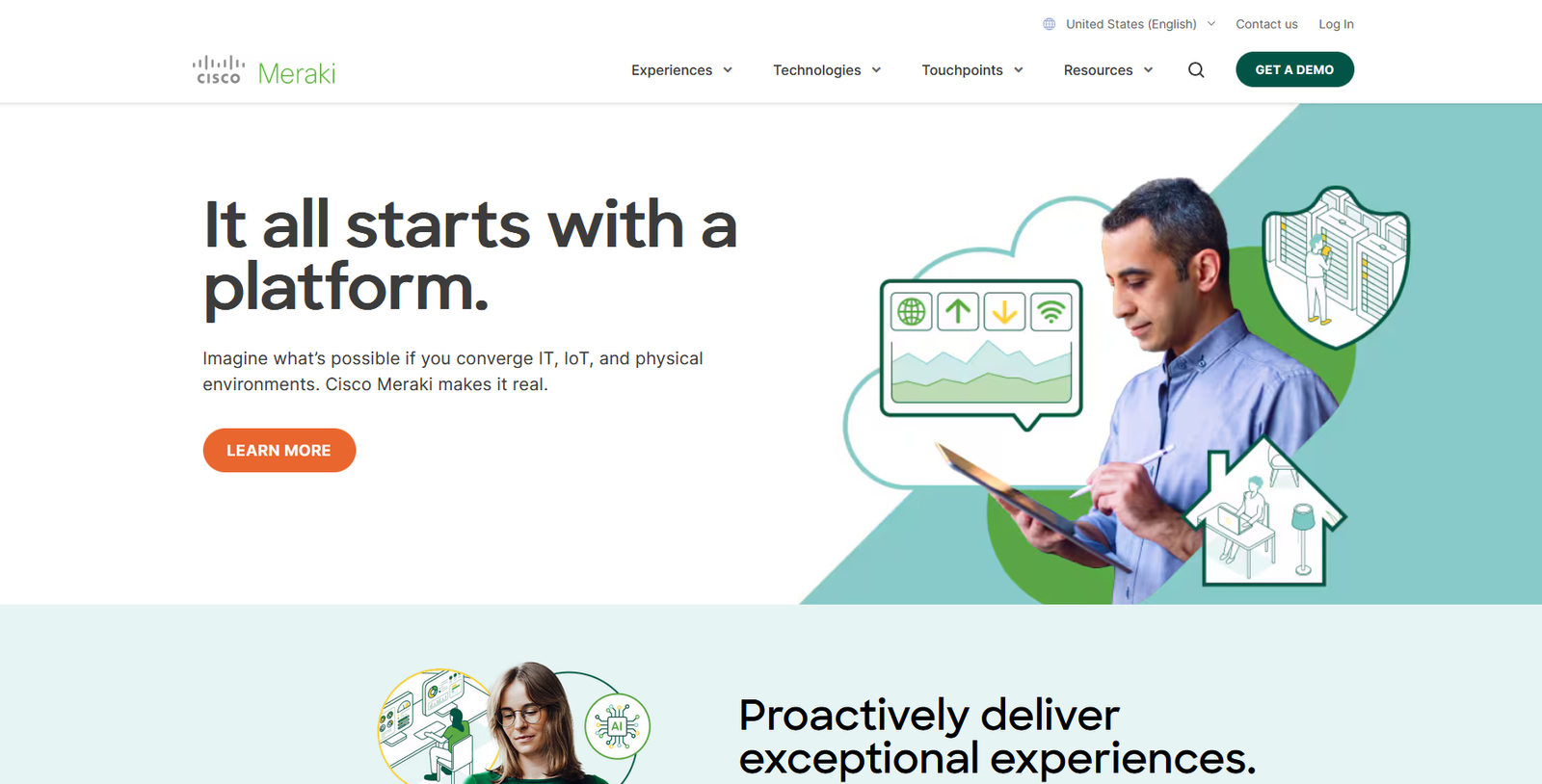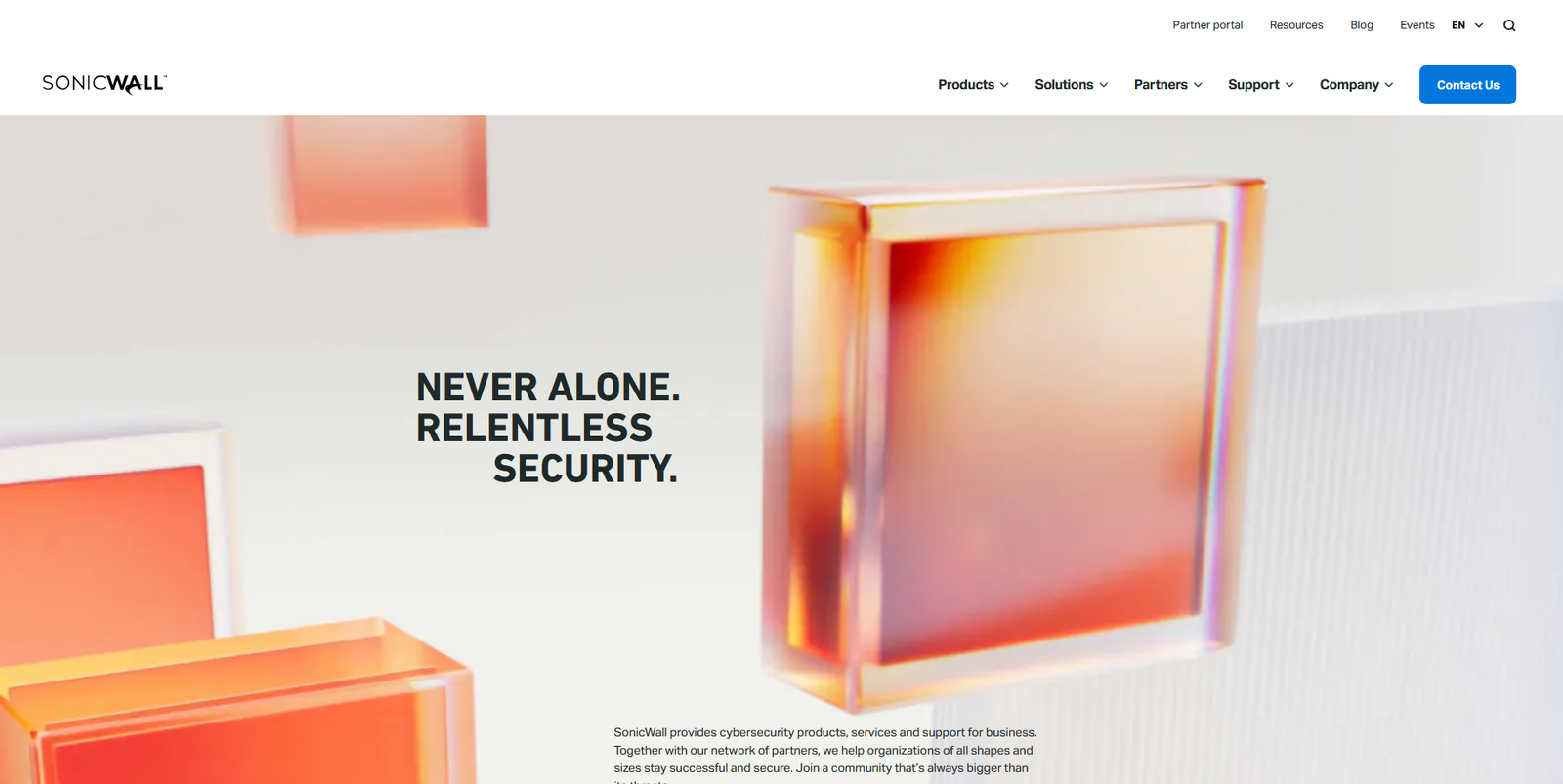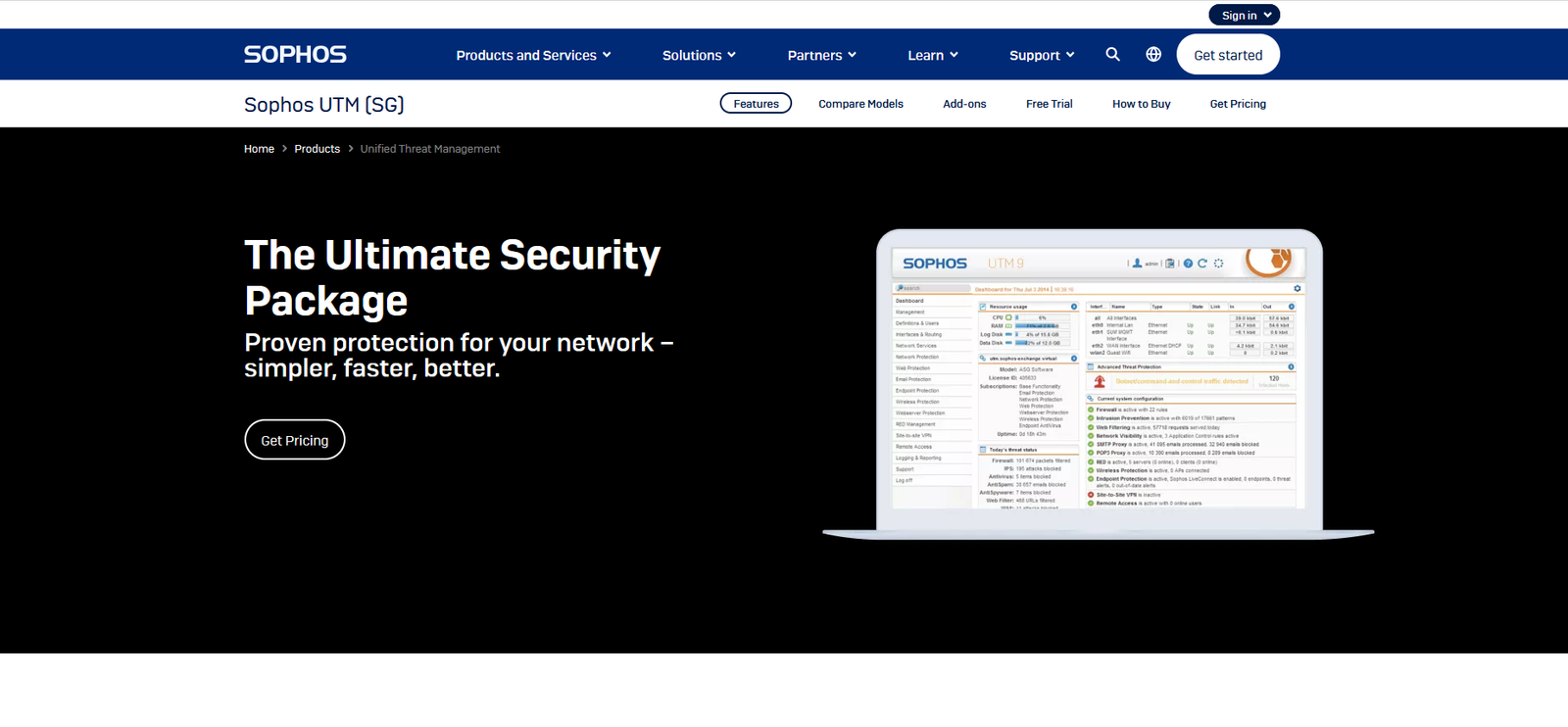In the ever-evolving landscape of cybersecurity, Unified Threat Management (UTM) software provides a holistic approach to network security by integrating multiple security services into a single platform.
These solutions offer a combination of firewall capabilities, Virtual Private Networks (VPNs), and malware detection, streamlining security management and enhancing protection.
This article explores some of the best UTM software available today, focusing on their features and benefits.
- FortiGate NGFW
- Check Point Next Generation Firewalls (NGFWs)
- Cisco Meraki
- SonicWall
- Sophos Unified Threat Management
1. FortiGate NGFW
FortiGate NGFW (Next-Generation Firewall) stands out in the realm of Unified Threat Management with its robust security features and high performance. FortiGate is designed to deliver comprehensive threat protection while simplifying security management.
One of the key strengths of FortiGate NGFW is its ability to integrate multiple security functions into a single platform. This includes advanced firewall capabilities, VPN support, and intrusion prevention systems (IPS). The platform leverages Fortinet’s proprietary Security Processing Units (SPUs) to ensure that performance remains high even under heavy load, minimizing latency and optimizing network throughput.
FortiGate NGFW is renowned for its user-friendly interface and centralized management, allowing administrators to easily configure and monitor security policies. The solution also supports advanced threat detection technologies, including AI-driven threat intelligence and behavioral analytics, which enhance its ability to detect and respond to sophisticated attacks.

2. Check Point Next Generation Firewalls (NGFWs)
Check Point’s Next Generation Firewalls, part of the Check Point Infinity architecture, are renowned for their comprehensive security capabilities and scalability. With 23 different firewall models, Check Point offers a wide range of options tailored to various network environments and security needs.
The Check Point NGFWs are optimized for running all threat prevention technologies simultaneously. This includes full SSL traffic inspection, which ensures that encrypted traffic is thoroughly examined for potential threats without compromising on performance. The integration of advanced threat prevention features, such as intrusion prevention, antivirus, anti-bot, and application control, provides a multi-layered defense against a broad spectrum of cyber threats.
The Check Point Infinity architecture enhances the NGFWs with centralized management and automated threat response capabilities. This architecture enables seamless integration with other security tools and platforms, offering a unified approach to threat management and reducing the complexity of security operations.

3. Cisco Meraki
Cisco Meraki offers a unique approach to Unified Threat Management by providing a cloud-based platform that centralizes network management. The Cisco Meraki dashboard allows administrators to manage their entire network from a single interface, simplifying the administration of network security.
The Meraki platform includes features such as advanced firewall capabilities, intrusion detection and prevention, and secure VPN access. Its cloud-managed architecture ensures that updates and patches are deployed seamlessly, enhancing the security posture without requiring manual intervention.
One of the notable advantages of Cisco Meraki is its ease of deployment and scalability. The solution is designed to be user-friendly, making it accessible to organizations of all sizes, including those with limited IT resources. The centralized management dashboard provides comprehensive visibility into network activity and security events, enabling administrators to respond quickly to emerging threats.

4. SonicWall
SonicWall is a prominent player in the UTM space, known for its real-time breach detection and prevention solutions. The company’s products protect over one million networks worldwide, demonstrating their effectiveness and reliability in safeguarding against cyber threats.
SonicWall’s UTM solutions integrate advanced firewall capabilities with real-time threat detection and prevention technologies. This includes deep packet inspection, intrusion prevention, and malware protection. The platform also offers secure VPN access and content filtering, providing a comprehensive security solution for diverse network environments.
One of SonicWall’s key features is its use of cloud-based threat intelligence, which enhances its ability to detect and mitigate emerging threats. The platform’s automated response capabilities ensure that threats are addressed swiftly, minimizing the impact on network performance and security.

5. Sophos Unified Threat Management
Sophos is renowned for its comprehensive UTM solutions, backed by a global network of skilled researchers and analysts. The company’s UTM products are designed to protect businesses from a wide range of malware, including viruses, rootkits, and spyware.
Sophos Unified Threat Management integrates advanced firewall capabilities with sophisticated threat detection technologies. The platform leverages real-time threat intelligence and behavioral analytics to identify and respond to emerging threats. Sophos also offers secure VPN access and content filtering as part of its UTM solution, providing a well-rounded approach to network security.
One of the standout features of Sophos UTM is its synchronized security architecture, which enables seamless integration between endpoint protection and network security. This integration enhances the overall effectiveness of threat detection and response, ensuring that organizations are well-protected against both known and unknown threats.

Conclusion
Unified Threat Management (UTM) software plays a crucial role in modern cybersecurity by integrating multiple security functions into a single platform. The solutions highlighted above offer unique features and benefits that cater to different organizational needs.
Selecting the right UTM software involves evaluating factors such as network size, security requirements, and ease of management. By leveraging the strengths of these top UTM solutions, organizations can enhance their network security posture, streamline management, and better protect their critical assets in an increasingly complex threat landscape.




Pingback: The Best Mobile Data Security Software for 2024 - Top at Top